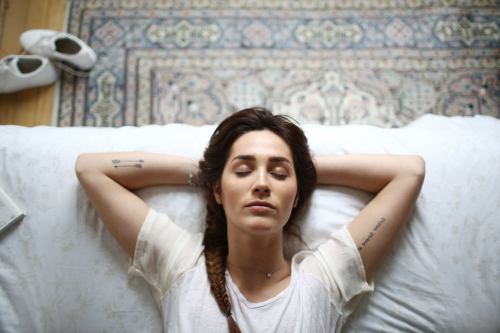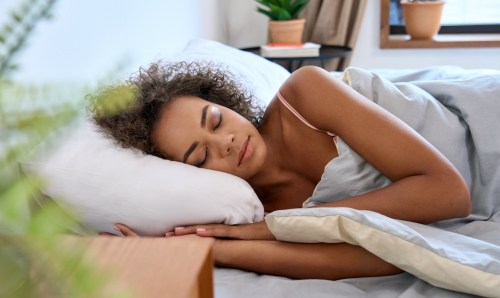This is how much you should be moving for a good night’s sleep, according to science
A new study shows that there is a positive correlation between physical activity and sleep. Here's why you should get moving.

A good night’s sleep is a luxury. Because, really, is there anything better than waking up feeling well rested? And on the other side of the mattress coin, is there anything worse than tossing and turning until 4 a.m. and then spending your day in a total zombie fog? Well, I’ve got good news: According to new research, the secret to the luxury of sleep is something everyone can afford (because it costs zero dollars)—all we’ve gotta do is move more.
Scientists from the Sleep Research Society conducted a study of 75,074 post-menopausal women, and found that the more physical activity you get during the day, the better you’ll sleep at night.
Women who were getting 7.5 to 17.5 hours of activity per week were more likely to sleep more than six hours, and those who were getting more than 7.5 hours a week of activity were 7 to 15 percent less likely to have restless sleep. It’s important to note that while more activity didn’t necessarily equate with more hours of sleep, it did help to improve the quality of those precious hours. So think: six hours of tossing and turning versus six unflinching hours deep into the REM cycle. And just as the hours the women spent moving affected their sleep, so too did the hours they spent sitting. If they were sedentary for more than six hours and sitting for more than 10 hours a day, they were likely to spend less time asleep.
If all of that sounds science-y and confusing, allow the study to sum it up for you: “Higher levels of light and moderate intensity physical activity are associated with better sleep quality, whereas higher amounts of sedentary time are associated with short sleep and lower quality sleep.” And one more thing? The more time spent lying down during waking hours, the worse your night’s sleep would be.
While the study only confirms this correlation in post-menopausal women (ICYWW, this population was chosen because both sedentary lifestyles and disrupted sleep are common among them), according to Dr. Benjamin Emanuel, associate professor of neurology at the University of Southern California’s (USC) Keck Medical Center, it can likely be applied to the rest of us, too. “There are many studies looking at the general population and middle-aged individuals that have shown the association between higher levels of physical activity and improved sleep quality,” he tells me.
While the study doesn’t go so far as to say exactly how much we should all be moving, Dr. Emanuel recommends keeping your physical activity in line with the recommendations made by the American Heart Association and American College of Cardiology, who both advise 150 minutes of moderate-intensity aerobic activity or 75 minutes of vigorous aerobic activity per week for adults.
Yet another reason to hit the gym: It will help you hit the hay that much harder.
Sitting all day? This is exactly how many minutes of exercise you need to make up for it, according to science. Plus, why that whole “10,000 steps” thing is secretly the biggest scam of our generation.
Sign Up for Our Daily Newsletter
Get all the latest in wellness, trends, food, fitness, beauty, and more delivered right to your inbox.
Got it, you've been added to our email list.










